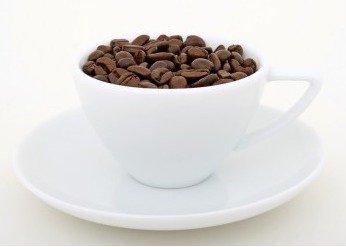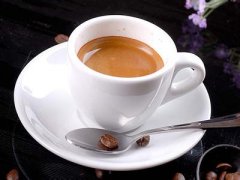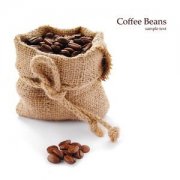Coffee beans and coffee beans

* Coffee cherry: the fruit of a coffee tree, named because its rind is bright red and its shape is very similar to cherries.
* round beans: when the coffee fruit is growing, one of the two seeds develops very well, and the other seed is eaten so that the coffee bean that should be oval becomes round.
* Elephant beans: bigger than ordinary coffee beans and usually insipid in taste.
* Coffee belt (Coffee Zone): usually refers to the area between the Tropic of Cancer and the Tropic of Cancer, because this area is the most suitable for growing coffee.
* drying: the use of sunlight to separate the pulp of coffee from the seeds to obtain raw beans.
* washing: the use of water to separate the pulp of coffee from the seeds to obtain raw beans.
* semi-washing: the way in which the first half is sunburned and the second half is washed to separate the coffee pulp from the seeds to obtain raw beans.
* aged beans: preserve raw beans in good condition for several years to develop a deeper flavor.
* boutique coffee: coffee, which is extremely carefully processed from planting and harvesting, can be said to be the top product in the coffee industry, which is different from the coffee produced in large quantities. At present, there are boutique coffee associations (SCAA and SCAE) in the United States and Europe, which specialize in the promotion of boutique coffee.
* Arabica (Arabica): coffee variety, the only coffee variety with 44 chromosomes, is of good quality but not easy to take care of, and is currently the most important variety in the coffee market.
* Robusta: a variety of coffee with large output, easy to take care of but poor quality. It is mainly used to make instant coffee. Robusta is the main variety second only to Arabica on the market.
* Silver skin: a thin film on the surface of raw beans that usually falls off when baked.
* the first explosion: the bursting reaction of coffee beans during roasting when the temperature is 190? F / C / 200?
* the second explosion: during the roasting process of coffee beans, when the temperature is about 230 degrees Celsius, the burst sound is smaller and denser than the first explosion.
* exhaust reaction: the reaction in which coffee beans continue to emit carbon dioxide after baking.
* raise beans: do not drink coffee beans immediately after drying. Store for a few days to complete the exhaust reaction, so that the flavor of coffee beans is fully ripe.
* defective beans: raw beans with broken, abnormal or moth-eaten appearance.
Important Notice :
前街咖啡 FrontStreet Coffee has moved to new addredd:
FrontStreet Coffee Address: 315,Donghua East Road,GuangZhou
Tel:020 38364473
- Prev

The definition of fine coffee what is fine coffee?
What is boutique coffee? The word is from Erna. Ms. Erna Knustsen was the first to reveal it in the Tea and Coffee monthly (TeaCoffee Trade Journal) in 1974. At that time, she worked as a coffee purchasing expert at B.C.Ireland in San Francisco. Based on her professional knowledge, she coined the new term [specialty coffee], which highlighted that only in the most
- Next

Boutique Coffee Dictionary commonly used coffee terms about coffee utensils
* Propeller bean grinder: a bean grinder whose shape is similar to that of a propeller. * disk type bean grinder: a bean grinder whose knife is of flat plate type. * Cone bean grinder: a bean grinder with a tapered knife. * Bean storage tank: the space above the bean grinder to store coffee beans. * Bean trough: the place at the bottom of the bean grinder to receive the ground coffee powder, and the bean trough for business use is usually the dispenser.
Related
- Beginners will see the "Coffee pull flower" guide!
- What is the difference between ice blog purified milk and ordinary milk coffee?
- Why is the Philippines the largest producer of crops in Liberia?
- For coffee extraction, should the fine powder be retained?
- How does extracted espresso fill pressed powder? How much strength does it take to press the powder?
- How to make jasmine cold extract coffee? Is the jasmine + latte good?
- Will this little toy really make the coffee taste better? How does Lily Drip affect coffee extraction?
- Will the action of slapping the filter cup also affect coffee extraction?
- What's the difference between powder-to-water ratio and powder-to-liquid ratio?
- What is the Ethiopian local species? What does it have to do with Heirloom native species?

